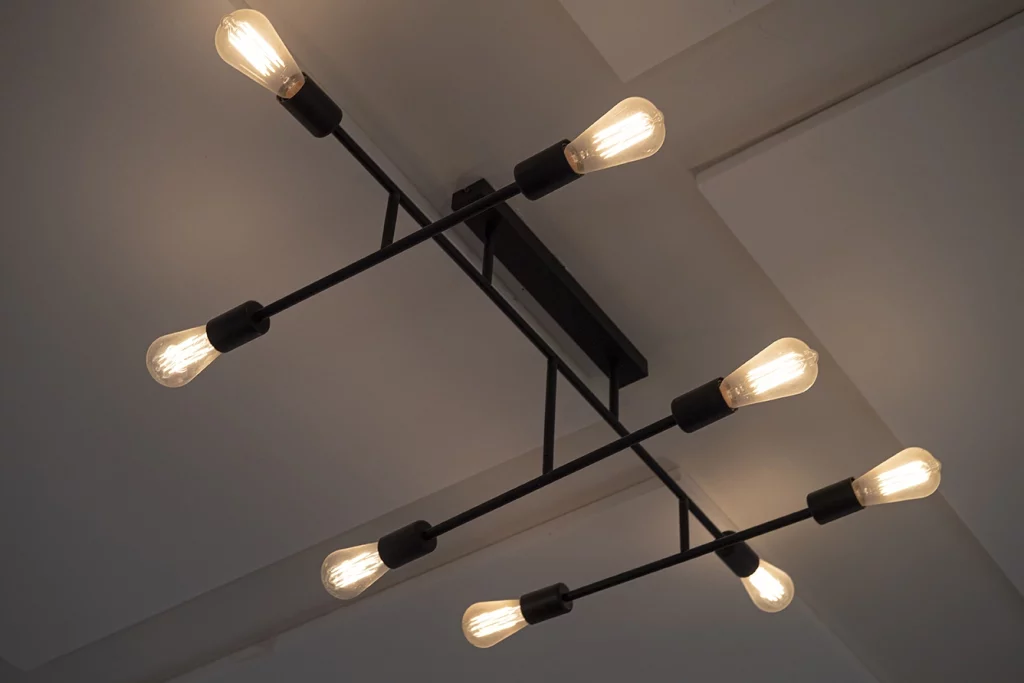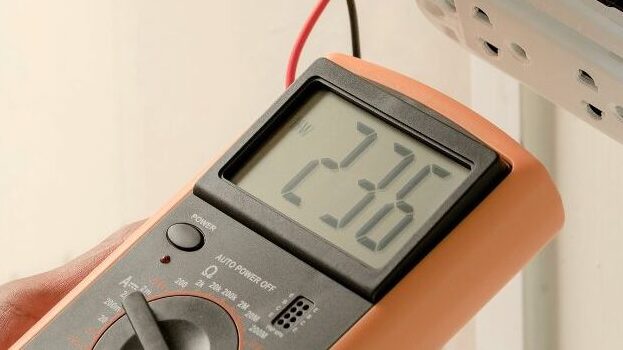Uncover the Key Factors Behind Your LED Light’s Dimming Problems
Quick Solution:
If your LED light has unexpectedly dimmed, the root cause is often a voltage drop, a circuit overload, excessive heat, poor-quality connections, or the use of inferior LED bulbs. Continue reading for detailed advice on how to tackle this issue and regain the full brightness of your lighting.
Investigate the Top 5 Causes of Dimming in LED Lights and Find Effective Remedies
LED lights are celebrated for their impressive lifespan, often promoted as lasting for many years. However, certain lights may fail prematurely, dimming unexpectedly. Whether you’re facing issues with downlights in your kitchen, decorative outdoor lighting, or festive Christmas LED lights, experiencing sudden dimming can be both irritating and quite common. This exhaustive guide will explore the main causes of LED dimming and provide you with actionable, safe troubleshooting techniques to restore your lighting to its intended brightness level.

1. Understanding How Voltage Drops Cause Unanticipated LED Dimming
The leading cause of LED lights dimming unexpectedly is often a voltage drop. When the voltage supplied to the lighting fixture falls below the necessary level for optimal LED functionality, the brightness can diminish significantly. So, what factors contribute to this voltage drop scenario?
- Temporary interruptions in the power grid
- Local circuits experiencing overloads
- Long wiring runs utilizing inadequate gauge cables
- Faulty switchboards or poor-quality connections
Voltage drops can create substantial challenges, particularly with budget LED lights that often lack proper voltage regulation and are especially sensitive to minor fluctuations. To ensure effective solutions, it is advisable to upgrade to higher-quality products that can withstand these variations effectively.
Also Read: 10 Ways to Save On Power And Energy Costs
2. Identifying Overloaded Circuits in Older Residential Properties
Connecting too many appliances or devices to a single circuit can significantly stress your power supply. When a circuit is unable to meet the demand, the voltage gets unevenly distributed among devices, resulting in dimming lights, particularly affecting sensitive LEDs. This issue is especially prevalent in older homes constructed before the advent of modern, energy-intensive technologies. Signs of overloaded circuits often include:
- Flickering lights
- Buzzing sounds from switches
- Dimmed lights, especially in affordable LEDs that may lack vital protective mechanisms.
Request a Quote and Inquire About Our FREE Electrical Inspections
3. Addressing Loose Connections and Damaged Electrical Wiring
Inadequate power delivery can often be traced back to loose connections or aging cables. If your light flickers or dims when adjusting a switch or device, it might indicate a loose connection. Here are some critical areas to inspect:
- Ensure that the bulb is securely seated
- Check for flickering at the wall switch
- Look for burn marks, discoloration, or unusual buzzing sounds
Important Note: Many low-cost LED lights use thin or poor-quality internal wiring, making them more vulnerable to failure due to heat or movement. Regular inspections and proactive maintenance can help prevent unexpected issues.
Also Read: Keep Your Pets Safe Around Electricity
4. Understanding the Dangers of Overheating in LED Lighting
While LEDs produce less heat compared to traditional incandescent bulbs, they still necessitate efficient heat dissipation. If an LED overheats, it will automatically dim as a protective measure. Overheating can result from various factors:
- Enclosed light fittings that hinder airflow
- Defective heat sinks, especially in budget models
- Excessively high ambient temperatures
- Inadequate air circulation around the light fixture
If your LED housing feels hot to the touch, it is highly likely that overheating is occurring. This problem is particularly common with inexpensive, poorly ventilated LED downlights or garden lights positioned in direct sunlight without adequate thermal protection.

5. The Impact of Lumen Depreciation on LED Brightness Over Time
Even top-quality LEDs will gradually reduce in brightness with prolonged usage, a process known as lumen depreciation. High-end LEDs can maintain approximately 70% to 90% of their brightness after around 50,000 hours of operation. Conversely, cheap LED products may begin to dim after just 5,000 to 10,000 hours, often doing so unevenly. If your lights are showing signs of:
- Being a budget model, they may be nearing the end of their lifespan.
- Being several years old and heavily utilized
- Experiencing frequent usage
Understanding Why Budget LED Lights Fail Prematurely
During festive seasons, inexpensive LED lights flood the market in various formats, such as string lights, downlights, and decorative garden features. The potential risks associated with these products include:
- Inconsistent voltage tolerance: making them susceptible to flickering and dimming
- Poor thermal management: increasing the likelihood of overheating
- Substandard drivers: which cannot effectively regulate electrical current
- Lack of weatherproofing: rendering them unsuitable for outdoor use
Holiday Shopping Tip: When purchasing LED Christmas lights, it’s wise to opt for products that feature:
- IP65+ waterproof rating
- Compliance certification marks (e.g., RCM)
- Established brands (steer clear of lesser-known bargain options)
While selecting cheaper lights may seem like a cost-effective choice initially, they can lead to greater expenses related to replacements, safety, and ongoing frustration in the long run.
Proven Strategies to Fix Dimming LED Lights
Check for Loose Connections and Signs of Overheating
Start by carefully inspecting your light fixture. Is the bulb fastened securely? Are there noticeable signs of fraying, corrosion, or damage? If you observe anything unusual, do not attempt to fix it yourself, especially if wires are exposed or if the fixture appears burnt or melted. Gently touch the fixture; if it feels excessively hot—think “it-could-cook-an-egg” hot—that is a significant warning sign. Overheating fixtures pose serious hazards and usually require replacement.
Need help? We are Beacon Lighting Recommended Electricians, specializing in installing and replacing LED fixtures. Whether you’re located in Braybrook, Yarraville, or the surrounding areas, Electrx can resolve your lighting issues safely and efficiently.
Use a Multimeter to Check Voltage Levels
If your LED is dim due to insufficient voltage, employing a multimeter can help identify the problem. Testing the voltage at your LED fixture will reveal whether your lights are receiving the correct power supply. Compare the voltage readings with the recommended voltage for your specific LED lights. If the voltage is lower than necessary, this could explain the dimming. Should the voltage consistently fall short, you may be facing a larger electrical problem and should reach out to a qualified electrician for further evaluation.
If you find low voltage across multiple fittings, there is likely a more significant wiring or switchboard issue at play.

Assess the Dimmer Switch Settings
We often get questions like this:
“Why is my light dim?”
Us: “Do you have a dimmer switch?”
Them: “…oh.”
Ensure that no unintentional adjustments have been made to the dimmer, and check for compatibility issues with your specific LED model.
Examine the Circuit by Turning Off Other Appliances
Try switching off other devices that are connected to the same circuit as your LED lights. If your lights brighten, you are likely experiencing an overloaded circuit. Consider taking the following steps:
- Redistributing devices to different circuits to balance the load
- Upgrading your switchboard for improved performance
- Replacing budget LEDs with more efficient models
Also Read: Electrical Upgrades For Your Office
Replace the LED Bulb If Needed
If none of these solutions rectify the situation, your LED might simply be nearing the end of its lifespan. Test by swapping it with another LED bulb from your home. If the replacement bulb restores full brightness, the original bulb was likely due for retirement. In that case, go ahead and purchase a new LED bulb. However, if changing bulbs doesn’t resolve the issue, the underlying cause likely resides elsewhere.
Crucial Insights into LED Dimming Challenges
So, what caused your LED light to suddenly dim? Potential culprits could include:
- Voltage drops affecting performance
- Loose connections interrupting power flow
- Heat accumulation compromising functionality
- Circuit overload due to excessive devices
- Or the LED itself—especially if it is a budget model
With this guide, you are now armed with the knowledge to identify what to check—and how to effectively resolve the situation.
However, if you are uncertain or notice any signs of damage, never compromise on electrical safety.
Let Electrx Help You with Your LED Lighting Concerns
We are licensed electricians and recognized installers for Beacon Lighting. Our comprehensive range of services includes:
- Testing and replacement of LEDs to guarantee safety and functionality
- Circuit diagnostics to pinpoint and address any issues
- Solutions for overload and overheating challenges
- Safe, long-lasting electrical upgrades for your home
If you have any questions regarding electrical matters, it is always wise to consult a professional electrician, such as Electrx Electricians. Contact us today for expert assistance and peace of mind.

Common Questions Regarding LED Troubleshooting
Q: Why is my new LED bulb already dim?
A: This could be due to a voltage drop, faulty wiring, or a low-quality LED that lacks adequate voltage regulation. Try replacing it with a high-quality LED to see if that resolves the issue.
Q: Do low-cost LED lights dim more rapidly?
A: Indeed. Budget LEDs frequently lack sufficient heat sinks and stable drivers, leading to premature lumen loss, flickering, and dimming—particularly in hot or outdoor environments.
Q: Why do my Christmas lights flicker and fade?
A: Seasonal LED string lights are often manufactured with lower-grade components. Environmental exposure, overuse, and power surges can all contribute to dimming. Always choose outdoor-rated, certified lighting to ensure durability and longevity.
Q: Can I troubleshoot dimming LED lights myself?
A: You can perform some basic checks by examining fittings, testing voltage levels, and replacing bulbs. However, if the issue persists—especially across multiple fixtures—contact a licensed electrician for professional assistance.
The Article: LED Light Dim? Discover the Reasons Behind It first appeared on https://writebuff.com
The Article LED Light Dim: Uncover the Causes of Dimming Issues Was Found On https://limitsofstrategy.com
The Article LED Light Dim: Discover What Causes Dimming Problems First Appeared ON
: https://ad4sc.com










No responses yet